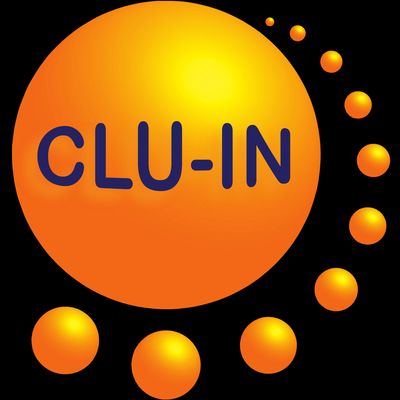Since 1998, The Contaminated Site Clean-Up Information (CLU-IN) website has presented Internet Seminars covering a wide variety of technical topics related to hazardous waste characterization, monitoring, and remediation. For select seminar topics offered since 2012, we are making complete video recordings available through our archives. This feed contains all video seminars archived in the last 12 months. For a complete list of seminars archived since 2000, please visit http://www.clu-in.org/live/archive/. Our Rehabilitation Act Notice for reasonable accommodation is available at http://www.clu-in.org/training/accommodation.cfm. CLU-IN was developed by the U.S. Environmental Protection Agency (EPA) but is intended as a forum for all waste remediation stakeholders. For more information and to view upcoming live offerings, please visit http://www.clu-in.org/live/. For a complete list of RSS feeds available on CLU-IN, please visit http://www.clu-in.org/rss/about/.
http://www.clu-in.org/live/archive
Petroleum Vapor Intrusion: Fundamentals of Screening, Investigation, and Management (Oct 20, 2016)
Chemical contaminants in soil and groundwater can volatilize into soil gas and migrate through unsaturated soils of the vadose zone. Vapor intrusion (VI) occurs when these vapors migrate upward into overlying buildings through cracks and gaps in the building floors, foundations, and utility conduits, and contaminate indoor air. If present at sufficiently high concentrations, these vapors may present a threat to the health and safety of building occupants. Petroleum vapor intrusion (PVI) is a subset of VI and is the process by which volatile petroleum hydrocarbons (PHCs) released as vapors from light nonaqueous phase liquids (LNAPL), petroleum-contaminated soils, or petroleum-contaminated groundwater migrate through the vadose zone and into overlying buildings. Fortunately, in the case of PHC vapors, this migration is often limited by microorganisms that are normally present in soil. The organisms consume these chemicals, reducing them to nontoxic end products through the process of biodegradation. The extent and rate to which this natural biodegradation process occurs is strongly influenced by the concentration of the vapor source, the distance the vapors must travel through soil from the source to potential receptors, and the presence of oxygen (O2) in the subsurface environment between the source and potential receptors. The ITRC Technical and Regulatory Guidance Web-Based Document, Petroleum Vapor Intrusion: Fundamentals of Screening, Investigation, and Management (PVI-1, 2014) and this associated Internet-based training provides regulators and practitioners with consensus information based on empirical data and recent research to support PVI decision making under different regulatory frameworks. The PVI assessment strategy described in this guidance document enables confident decision making that protects human health for various types of petroleum sites and multiple PHC compounds. This guidance provides a comprehensive methodology for screening, investigating, and managing potential PVI sites and is intended to promote the efficient use of resources and increase confidence in decision making when evaluating the potential for vapor intrusion at petroleum-contaminated sites. By using the ITRC guidance document, the vapor intrusion pathway can be eliminated from further investigation at many sites where soil or groundwater is contaminated with petroleum hydrocarbons or where LNAPL is present. After attending this ITRC Internet-based training, participants should be able to: Determine when and how to use the ITRC PVI document at their sites Describe the important role of biodegradation impacts on the PVI pathway (in contrast to chlorinated solvent contaminated sites) Value a PVI conceptual site model (CSM) and list its key components Apply the ITRC PVI 8 step decision process to screen sites for the PVI pathway and determine actions to take if a site does not initially screen out, (e.g., site investigation, modeling, and vapor control and site management) Access fact sheets to support community engagement activities at each step in the processFor reference during the training class, participants should have a copy of the flowcharts, Figures 1-2, 3-2, and 4-1 from the ITRC Technical and Regulatory Guidance Web-Based Document, Petroleum Vapor Intrusion: Fundamentals of Screening, Investigation, and Management (PVI-1, 2014) and are available as a 3-page PDF at http://www.cluin.org/conf/itrc/PVI/ITRC-PVI-FlowCharts.pdf ITRC also offers a 2-day PVI focused classroom training at locations across the US. The classroom training provides participants the opportunity to learn more in-depth information about the PVI pathway and practice applying the ITRC PVI guidance document with a diverse group of environmental professionals. Learn more at the ITRC PVI classroom training page. To view this archive online or download the slides associated with this seminar, please visit http://www.clu-in.org/conf/itrc/PVI_102016/
